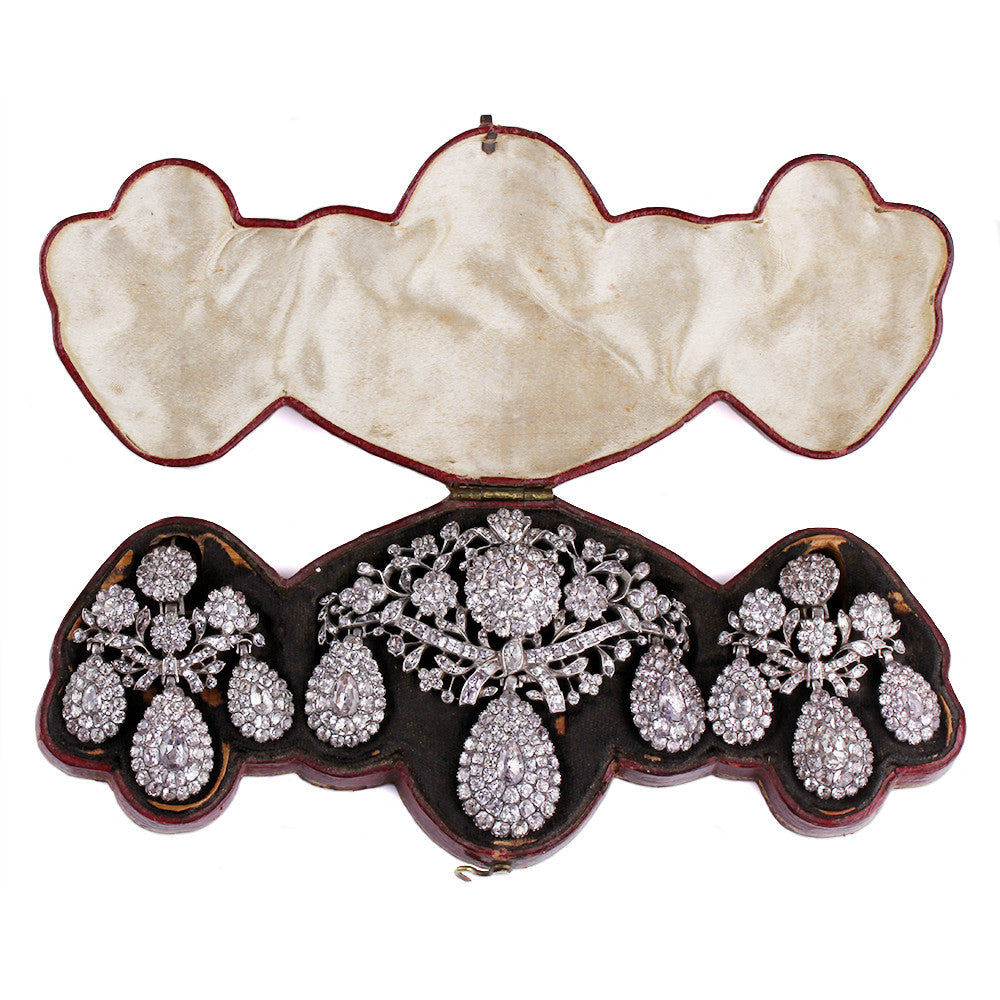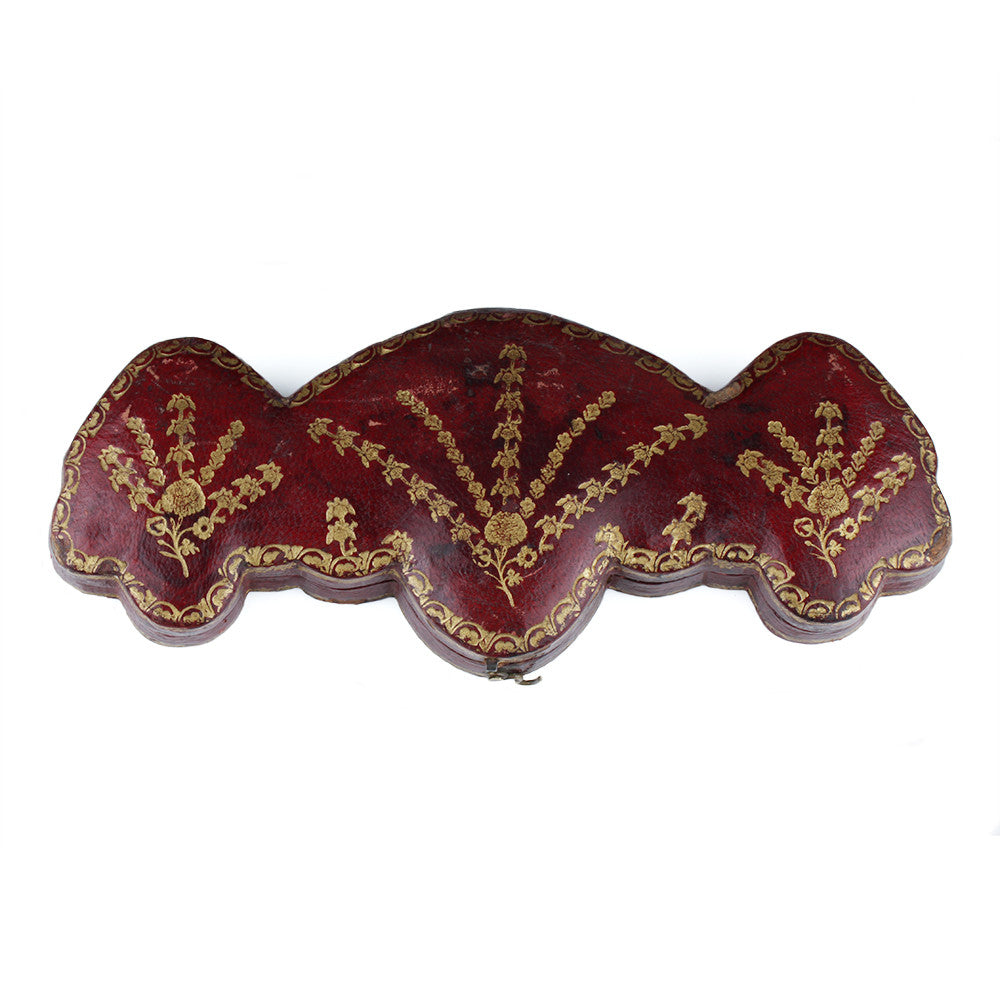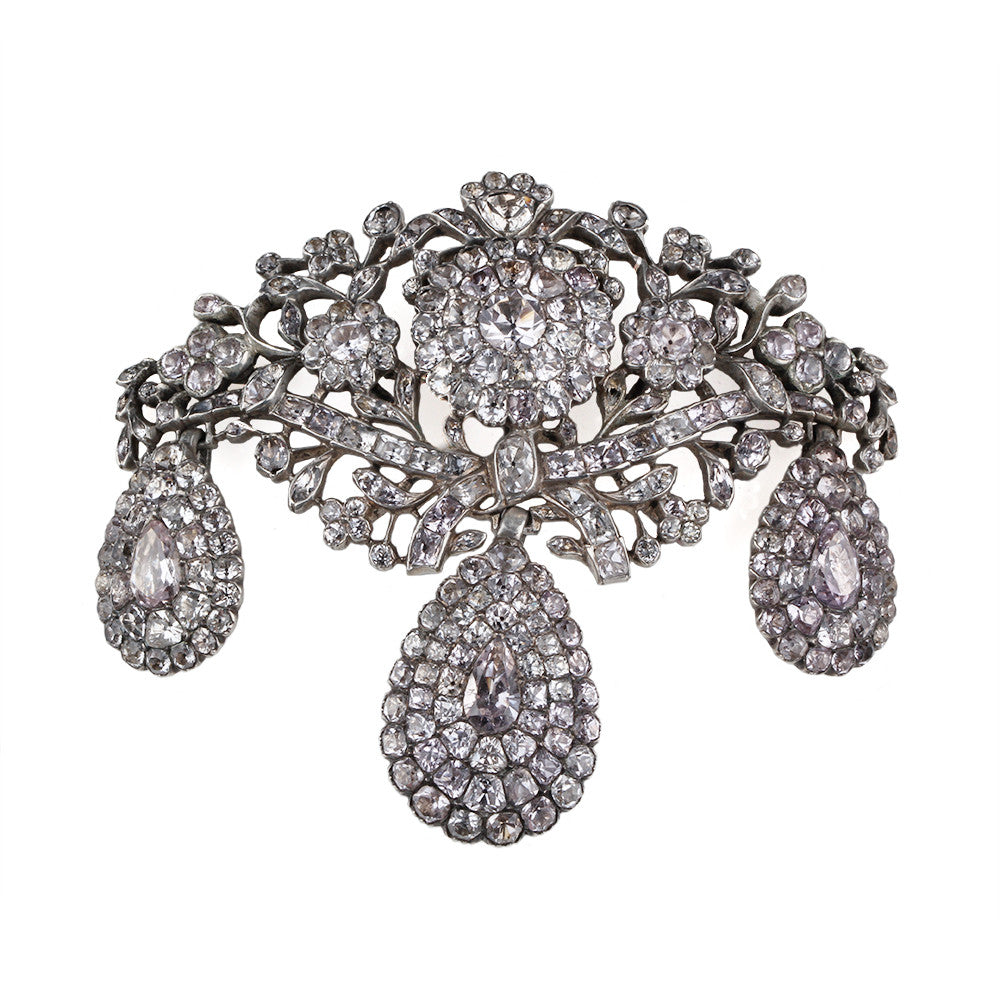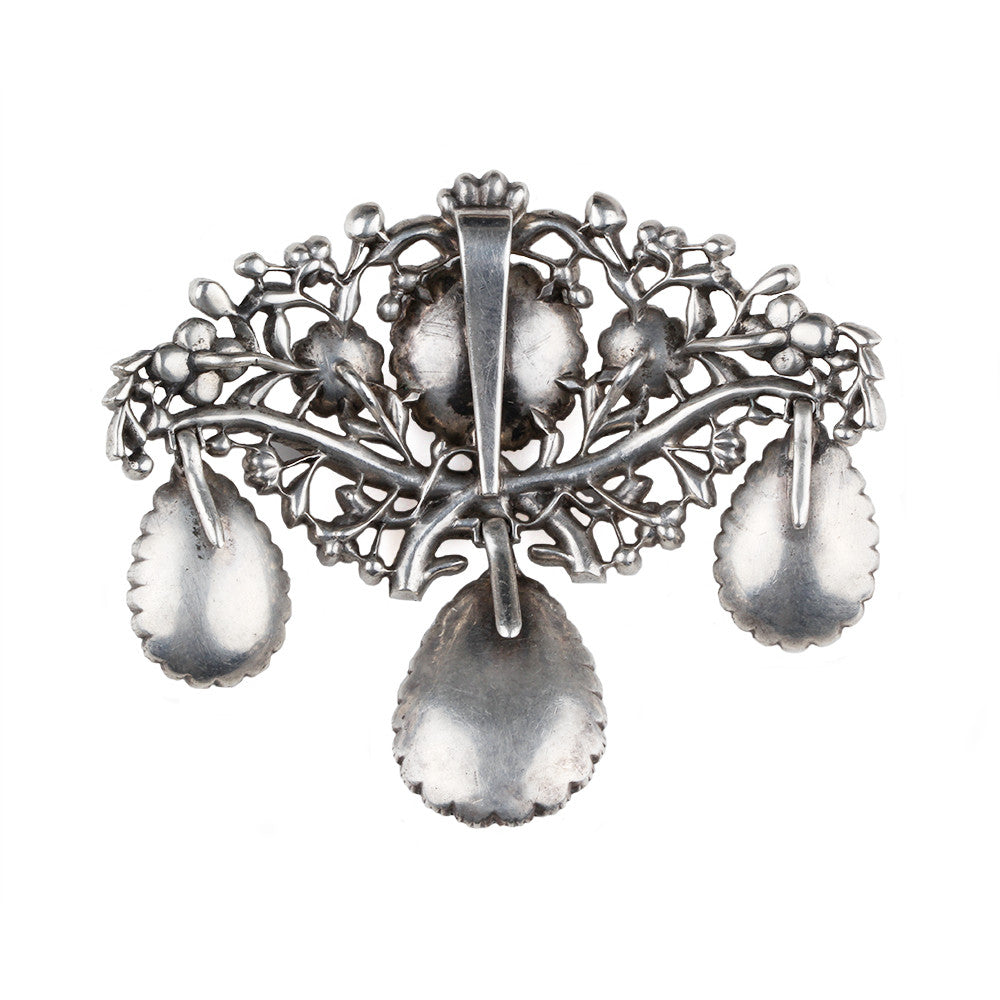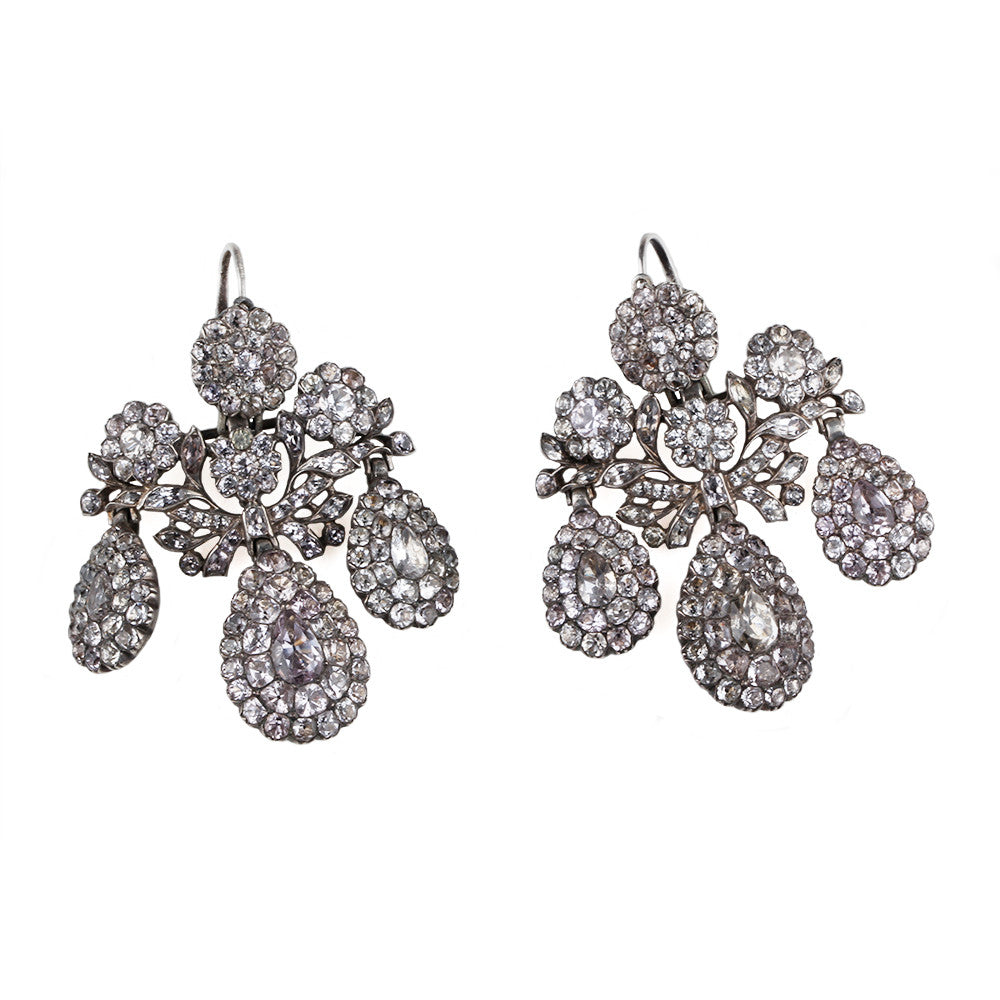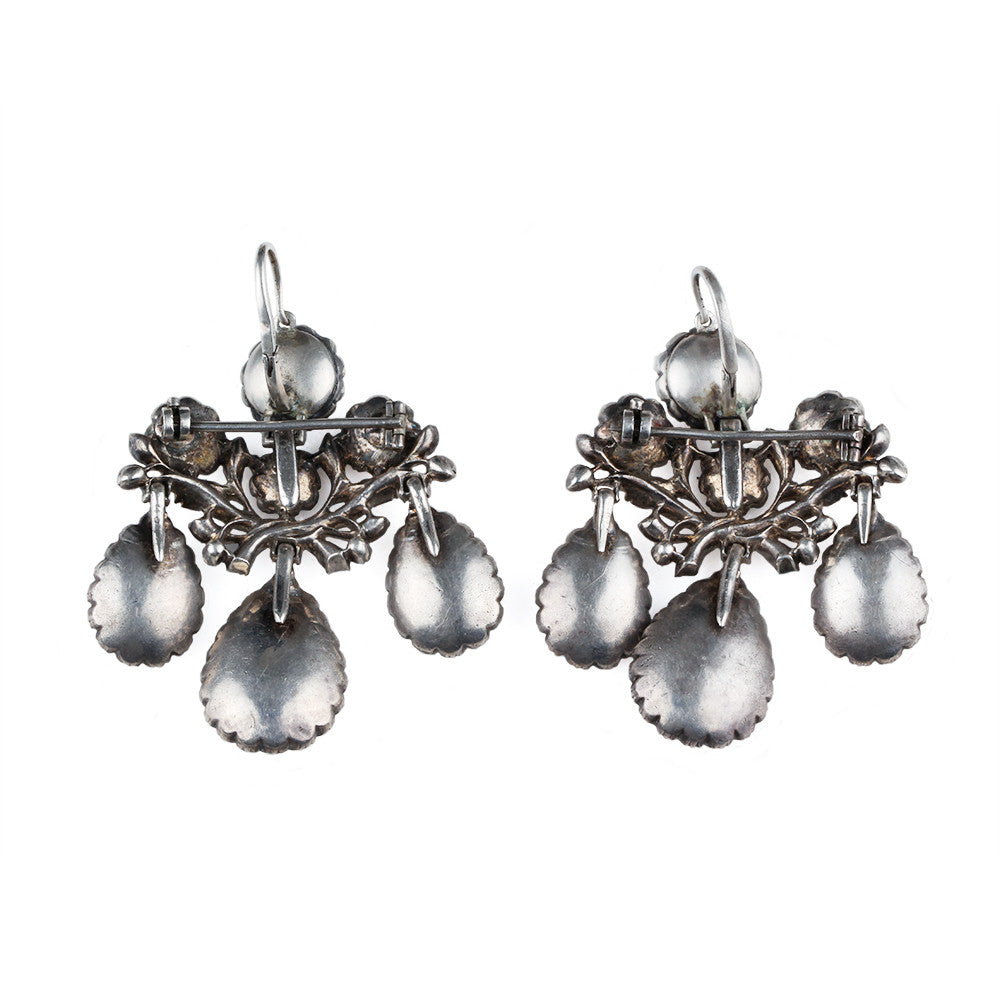18th Century Portuguese Topaz Demi Parure
Admiring this treasure? We can send a gentle suggestion on your behalf.
By the Eighteenth century Portugal was one of the most powerful merchant empires. Established Indian trade routes had been active for 200 years bringing the Portuguese great wealth and access to gemstones. The later exploration of South America led to the discovery of several important gems in the mineral rich colony of Brazil.
Portugal, like much of Europe, typically followed the French in jewelry and decorative designs fashionable with the aristocracy. Brazilian stones of chrysoberyl, topaz, and aquamarine were among the materials that gave a regional taste to Portuguese designs. Stones were polished and mounted side by side with the slightest metal frame separating each stone. Each stone is set with a foil behind the stone to give a soft light that would have enhanced the jewel in candlelight.
The present example is a rare survival of a classic design in Portugese jewelry. The demi parure is housed in its original hand tooled leather case. The set is comprised of a central girandole stomacher pendent, flanked by matching girandole earrings. Each piece is set with both white and the softest pink natural topaz stones, closed set and foil backed in silver. For a similar example see Five Centuries of Jewelry (p 80). Portuguese. Second half of the 18th century.

